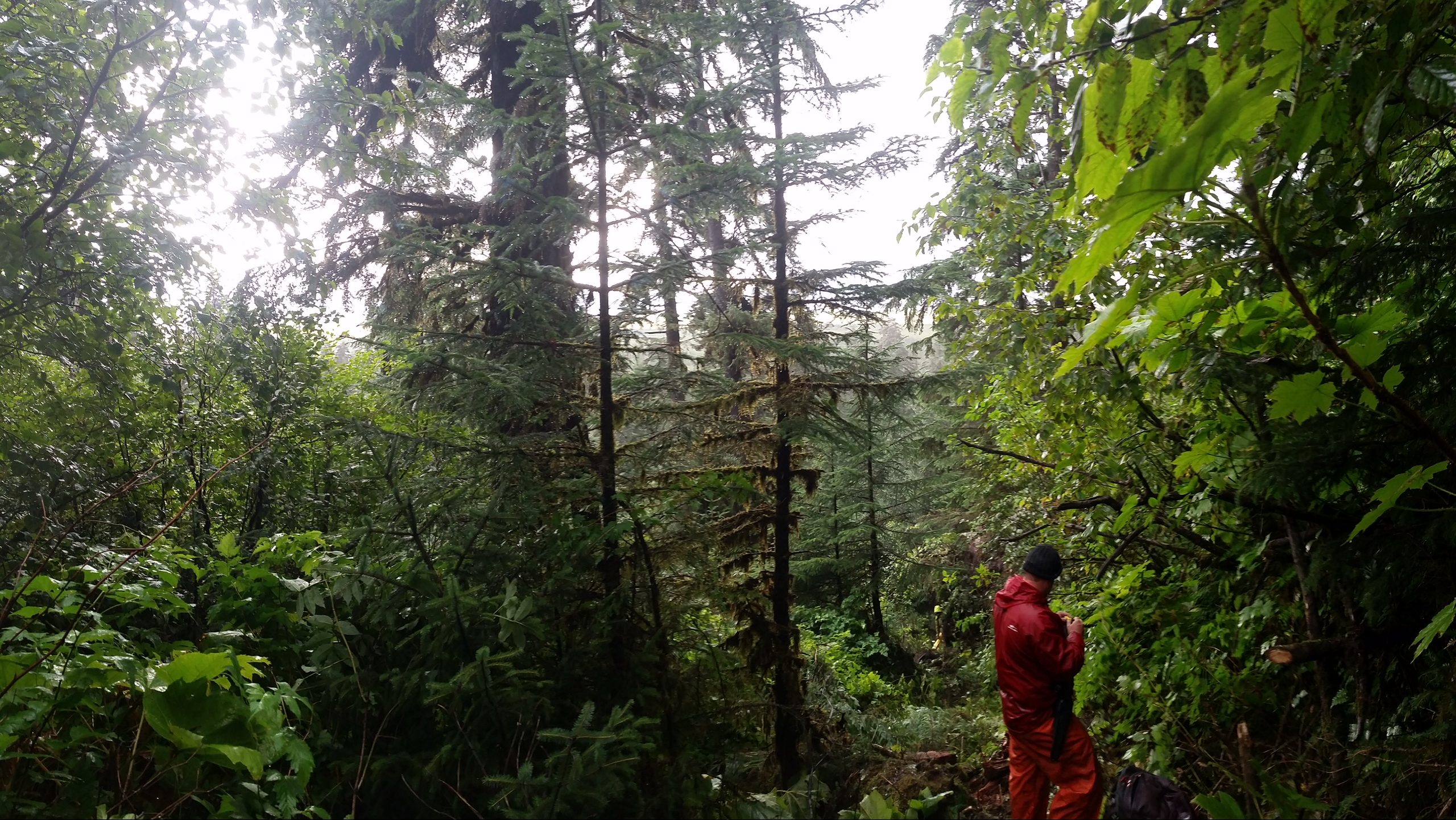
UMaine engineering program bolstered by nontraditional, online students
The first time Zach Robinson stepped foot on the University of Maine campus was for his graduation. In fact, it was the first time he had ever been to the state. Having flown from California to Boston, Robinson was awed by the lush greenery of Maine in May as he drove north from Massachusetts.
Robinson completed his bachelor’s degree entirely online through UMaine’s Surveying Engineering Technology (SVT) program. Raymond Hintz, professor of surveying engineering technology, convinced Robinson to visit Maine to celebrate his graduation from the program.
“I got a little teary-eyed because it was my bachelor’s,” Robinson said. “They gave me so many opportunities,” he added of the faculty who molded his experience.
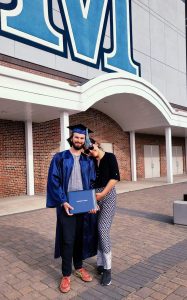
Robinson didn’t enroll in the SVT program directly following high school; after completing two engineering internships in Florida, he decided the career path wasn’t right for him. He found a love for the surveying profession in the process and decided he wanted to pursue it more seriously. Becoming a professional land surveyor in more than half the states in the U.S. requires a bachelor’s degree followed by two to four years of work supervised by a licensed land surveyor. Two national tests and a state-based test are also required.
Robinson was drawn to UMaine’s SVT program because it was the only one he could find that was offered entirely online.
“I contacted Ray [Hintz] and said, ‘Hey, I don’t want to do civil engineering. I’d like to do surveying.’ And he said, ‘Come on over. We’ll get your credits transferred. You can take as many or as few classes as you want per semester,’” Robinson said.
While working full time and with help from Hintz, Robinson, now the youngest licensed professional land surveyor in California, graduated with his bachelor’s degree in surveying engineering technology in 2021 and started his master’s degree in the program a year later.
Robinson’s path to UMaine’s SVT program isn’t unique. Nearly all of the students who comprise the program’s enrollment are online students or are considered nontraditional students – oftentimes they are both.
Different institutions have varying definitions for nontraditional students. At UMaine, nontraditional students are those who are 24 years or older. These students have typically chosen to pursue a college degree several years past their graduation from high school. They may be married, have children or have been through other circumstances that differentiate them from the traditional path – entering college immediately after graduating high school.
The number and proportion of degree-seeking undergraduates who are 24 or older has increased. They now comprise 10% of the undergraduate population at UMaine, an increase from 8% in 2017. Of those nontraditional students, 42% are enrolled in online programs.
Similarly, 40% of undergraduate transfer students are 24 or older, with 49% of that number enrolled in online programs.
A headstart in online learning
At the height of the COVID-19 pandemic, businesses and organizations had to address how best to proceed in a new, virtual environment. Hintz had already jumped into online learning head first in 2015. The Professional Science Masters (PSM) was the first online option Hintz offered to surveyors. Online content was then offered to undergraduate students upon request.
“I started offering online undergraduate classes as an experiment more than anything,” Hintz said.
Surveyors use detective-like methods to find accurate locations and measurements and to determine property boundaries. Their studies involve using electronic/optical instruments, levels, GPS receivers and software to process data. Understanding how to use the equipment is a primary function of the career, which makes offering the program online especially difficult.
Hintz referred to the first couple of years of online surveying education as the “wild west.” He delivered classes from anywhere, often lecturing during his travels. Despite this, the experiment was a success. In 2018, Hintz formalized a fully online option for an undergraduate surveying degree.
The next challenge was finding students who were interested – making it available online wasn’t enough.
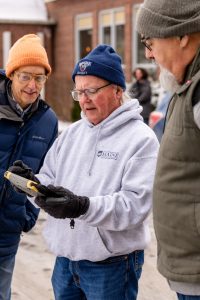
“I do a lot of traveling. So word of mouth is kind of how I got around to people,” Hintz said. His initial work made the transition to online formats during the pandemic much easier. When the time came that everyone had online education top-of-mind, SVT faculty were already prepared to help their students succeed.
The SVT program is now equipped with an immersive lab and online education production space, which has helped refine the course offerings available to online students. As part of the online experience, students receive instruction with the latest surveying technology provided by a $1.7 million equipment loan from Topcon Positioning Systems, Inc.
Since 2019, SVT program enrollment has increased 156%, with 91% of students completing their degree entirely online. Much of it is thanks to Hintz work, as well as his partnership with UMaine’s Division of Lifelong Learning and Admissions.
As more graduates leave the program and communicate with other survey professionals, Hintz said their word is now the program’s predominant recruiting tool.
When Hintz approached his colleagues with the idea of providing an online option, no one expected that it would be as successful as it has been. His colleagues thought the program may get 20-30 online students.
Enrollment has reached nearly 400.
Aaron Brown, a UMaine graduate, earned his PSM fully online while working as an associate project surveyor at Alaska Native Tribal Health Division of Engineering and Environmental Health, the largest tribal health organization in the U.S. The degree made it possible for him to obtain his surveying license and become the owner and operator of Vector Surveying in Anchorage, Alaska, which he founded in 2023. Much like Robinson, Brown found a love for surveying after pursuing a different educational path.
“I had two options post-undergraduate education after earning a degree in mathematics and applied statistics: go back and complete another four-year degree, with surveying specific course work in Alaska, or take my education to the next level and shoot for a master’s degree or graduate certificate,” Brown said.
Through his research, he narrowed his choices down to two universities that offered graduate education in surveying: the University of Florida at Gainesville and the University of Maine. Brown said Maine’s nontraditional master’s program was affordable in comparison to Florida. Then he had a conversation with Hintz about his 11 years of surveying experience in Alaska, his bachelor’s degree in mathematics and applied statistics and his eagerness to obtain a professional license in surveying, which requires four years of experience and four years of education in Alaska.
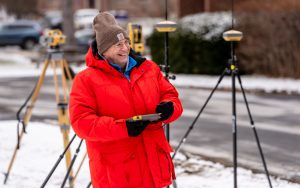
“One month later I was on board and completing graduate level course work in surveying to be applied to licensure education in Alaska. It was all because of the University of Maine’s staff and faculty, plus it was backed by a bit of eagerness from me to earn a Professional Land Surveyor (PLS) license.”
As a full-time employee, Brown knew that obtaining his PSM would be difficult. His work schedule required one week in the field, followed by two weeks in the office mapping entire villages. He worked in approximately 70 remote locations across Alaska in under four years.
“It’s challenging logistically to get a classroom-based education while working as a surveyor in Alaska,” Brown said. “Surveyors essentially need to get 12 months of fieldwork completed in one summer while there’s no snow on the ground.”
Brown found that his online class meetings through UMaine were valuable and in line with the transition to remote-based work caused by the pandemic.
“Surveyors from many parts of the nation were discussing survey topics unique to the state where they practiced; we were all on the same page talking the same language,” Brown said.
Hintz encouraged Brown to fly to Maine for graduation. With airline points Brown had collected flying to and from remote survey assignments in Alaska, he and his wife turned the trip into a vacation, spending time exploring Maine before it culminated in Brown receiving his degree on campus.
Brown was recently admitted as a Ph.D. student to the Doctor of Engineering in Engineering Technology program, which was approved in April by the University of Maine System Board of Trustees. It is the only online Ph.D. program in surveying in the nation.
Meeting employment demand
“Almost all of our students are nontraditional learners, which is fantastic,” said Rich Vannozzi, assistant professor in surveying engineering technology at UMaine. “The surveying profession since the 80s has spent millions of dollars on outreach, supporting undergraduate programs around the country to put people in seats.”
Despite the outreach efforts, data from the Bureau of Labor Statistics states the number of licensed surveyors employed in the U.S. decreased from 56,200 in 2010 to 47,770 in 2020, a decline of 14.3%. But it wasn’t because employers needed fewer surveyors.
Two phenomena are driving the critical need for surveyors, according to Vannozzi. Retirements are dropping the number of surveyors in most states by 5-10% every year and the demand for educated surveyors is increasing. In Maine, for instance, local businesses are finding it difficult to staff their surveying departments with fewer than 450 licensed surveyors in the state.
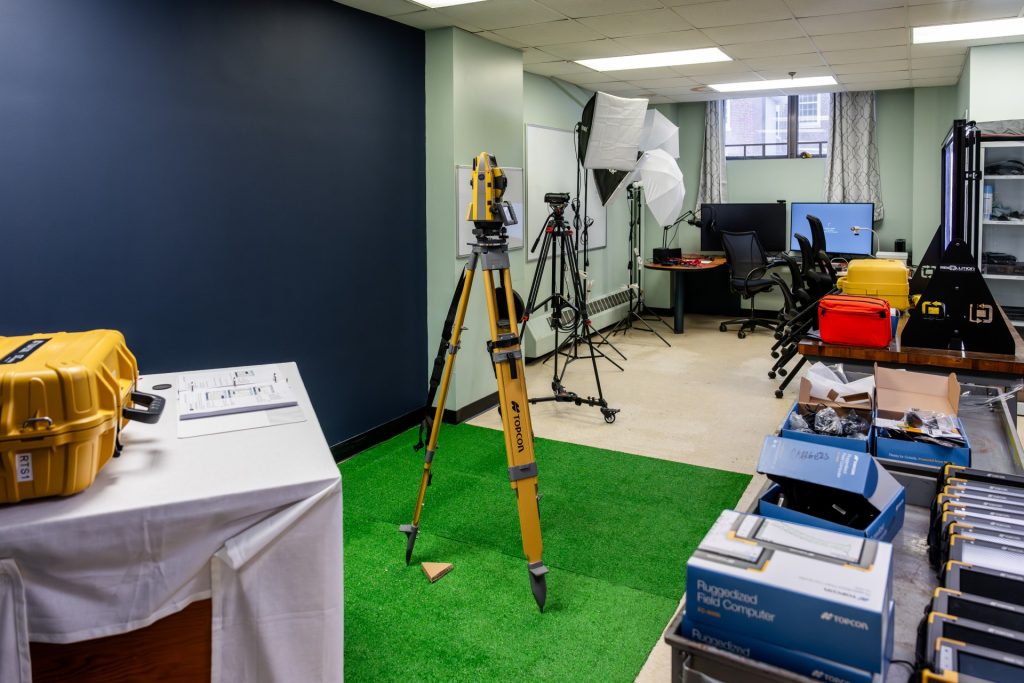
“There was a time 40 years ago when you could enter this profession and have a successful career with a minimal amount of formal education. That is not realistic anymore,” Vannozzi said, adding that educational outreach was failing because of an access issue. “As soon as we opened up the idea of access to get a degree remotely, there was a huge amount of demand for what we do,” he said.
Jeff Teunisen is executive vice president and survey director at Haley Ward, a technical consulting firm offering a range of engineering, environmental and surveying services. Haley Ward is headquartered in Bangor with additional holdings in New Hampshire, Massachusetts and Florida.
“The University of Maine is instrumental in providing surveyors for Bangor and Maine,” Teunisen said. “All of our employees here are graduates from the University of Maine.”
Teunisen, who oversees surveying operations across the company’s locations, has had difficulty recruiting surveyors amidst increased demand for the work brought on by the pandemic. “We actually had one client who had us survey three properties before they finally bought one,” he said.
The struggle isn’t unique to Maine.
“There’s a huge demand for surveyors in Alaska,” Brown said. “All the engineering companies are looking to hire land surveyors. There’s always advertising for land surveyors, and the pay scale is really competitive now because there’s a lack of surveyors. It’s supply and demand – less surveyors, more demand, higher pay.”
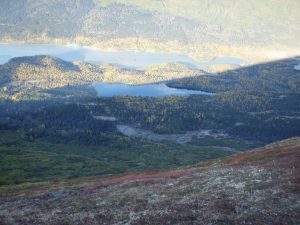
Vannozzi also highlighted the nationwide need for surveyors, as their availability is driving real estate projects and development schedules, as well as the work of UMaine’s program to fill the void. After seeing the huge increase in enrollment, he has found renewed hope for the program and knows much of it is because of the work Hintz, whose coworkers affectionately call him the “pied piper,” has done to connect with students all over the world.
“The program here, which is Ray [Hintz’] brainchild, is about breaking down barriers,” Vannozzi said. “There is no longer a geographic barrier to getting survey education in the United States. And that’s why we went from a footprint of maybe 40 to 50 students on campus to a national footprint.”
Story by Shelby Hartin.
Contact: Marcus Wolf, marcus.wolf@maine.edu
